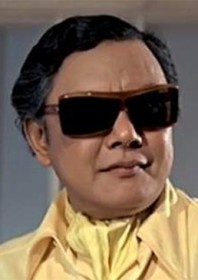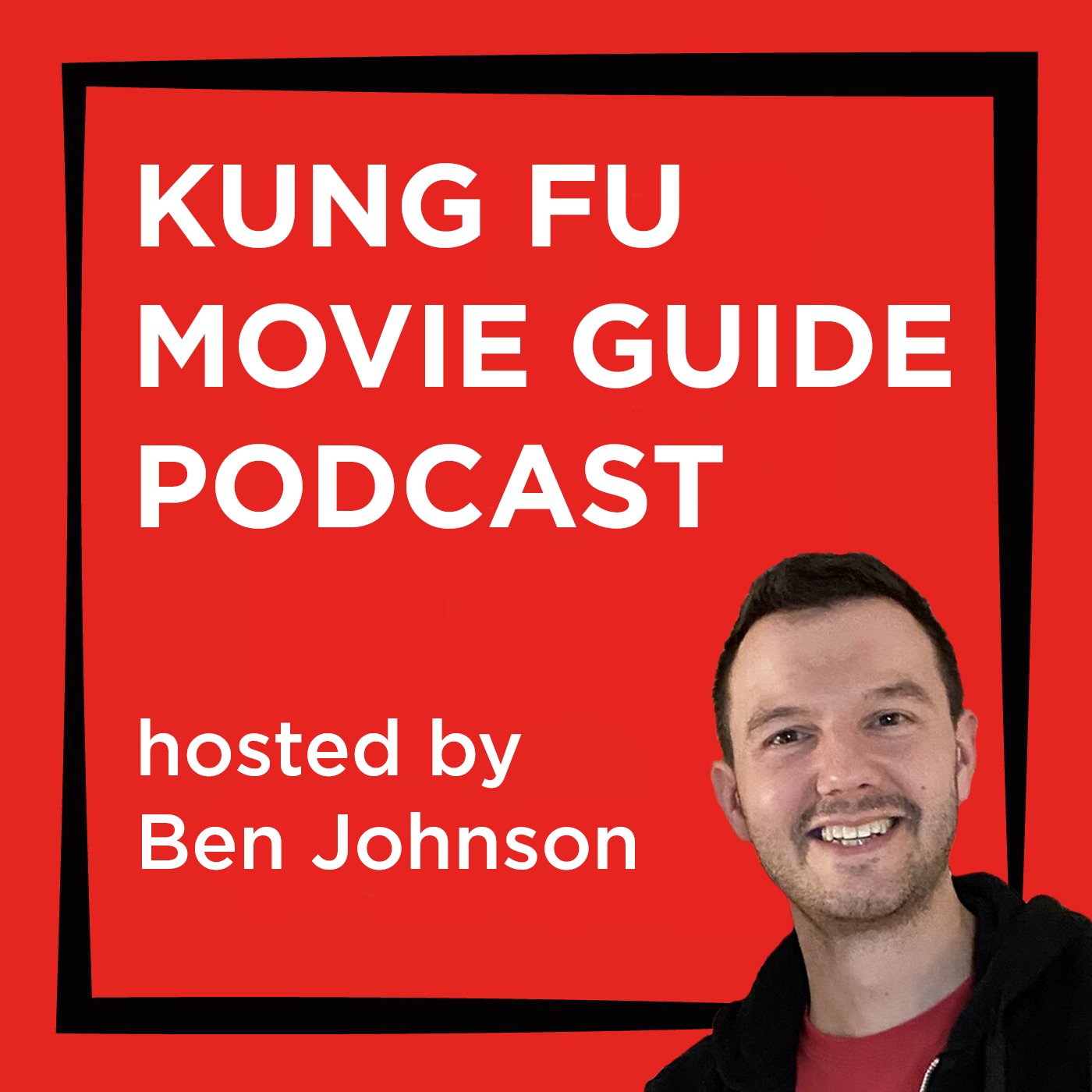
Date of birth: February 10, 1923 (Qingtian county, China)
Date of death: June 22, 2002 (aged 79), Hong Kong
Birth name: Chang Yi-yang
Other names: Cheung Kit, Chang Che, Chang Cheuh, Chang Chueh, Chang Yik-yan, Chin Chien, Cheung Chit, Chang Chit, Chang Chih
Occupation: Director, producer, writer.
Biography: Chang Cheh is known as the Godfather of Hong Kong action cinema. He was one of martial arts cinema’s most prolific directors with over 90 films to his name (70 of which were filmed in only 15 years). Although the quality of his films vary, much of his best work is regarded as classic examples of the genre.
Along with King Hu, he was responsible for the re-birth of wuxia cinema in the 1960s and the subsequent rise of the kung fu film in the 1970s. Inspired by the heroism found in Japanese and western cinema, Chang used mostly all-male casts to tell passionate, violent stories of young rebels, political upheaval and violent revolution, featuring hot-blooded characters willing to die for their cause. His films strongly advocated the themes of yanggang (masculinity), designed as a backlash to the Chinese cinema of the 1950s which he considered to be too effeminate.
Chang worked predominantly with the same actors, and his career can be defined by four generations of core fighting teams: Jimmy Wang Yu and Lo Lieh; David Chiang and Ti Lung; Chen Kuan-tai and Alexander Fu Sheng; and a group of former stuntmen known collectively as ‘the Venoms’. His yanggang style would inspire film makers like John Woo (who started his career as one of Chang Cheh’s assistants), Tsui Hark, Lau Kar-leung and Ringo Lam. Quentin Tarantino even paid him a special tribute in the closing credits of Kill Bill: Vol. 2.
Chang Cheh’s early life was filled with personal and political struggle which undoubtedly helped to shape his cinematic vision. He was born in Qingtian in Zhejiang Province in 1923. At the outbreak of war with the Japanese, he was forced as a refugee to move to Chongqing (formerly Chungking), where he took part in drama and cultural work. He formed a social education team for the Department of Education before moving to Shanghai after the war to help promote social affairs for the government. He also became the manager of a theatre which put on plays, Beijing Opera performances and screened movies.
His first script to be accepted was The False Faced Woman (1947) for the Shanghai Cathay Film Production company, which was the first Mandarin film to be shot in Taiwan. In 1949, he relocated to Taiwan where, at the age of 26, he made his directorial debut with the film Happenings in Ali Shan. It was the first Mandarin film produced by a Taiwanese company. He even wrote the film’s theme song.
Major political change in Mainland China made it impossible for the fledgling Taiwanese film industry to continue as China refused access to any foreign products. It also made it impossible for Taiwan to obtain equipment from China. However, Chang Cheh remained in Taiwan where we was forced to find alternate work. He studied politics, mixing in civil and military circles, and continued to write and direct stage productions.
In 1956, Chang Cheh wrote the Taiwanese film, The Cruel Heart of My Man, starring Li Mei. In 1957, Li Mei encouraged Chang to relocate to Hong Kong to write and direct her film, Wild Fires. Chang remained in Hong Kong where he became a columnist, a writer of martial arts and romance novels, and a film critic.
In 1960, Chang Cheh joined the Motion Picture & General Investment Co Ltd (later to be renamed the Cathay Organisation) as a scriptwriter. In 1962, Chang became chief scriptwriter at the Shaw Brothers production company, where he would write 20 scripts over the next five years. He also focused more on directing. In 1964, Chang wrote and directed the film Tiger Boy starring Jimmy Wang Yu and Lo Lieh.
It was the release of One-Armed Swordsman (1967) which would help to define Chang Cheh as a leading voice in a new kind of Hong Kong action cinema. The film, which would become the first Hong Kong production to earn over HK$1m at the box office, made an international star of Jimmy Wang Yu and was his first collaboration with the scriptwriter Ni Kuang.
Over the next 10 years, Chang Cheh would go on to make his most influential films at an incredible rate, averaging around four films a year. His movies from this period include the wuxia films The Assassin (1967) and Golden Swallow (1968) – the latter a sequel to Come Drink with Me, directed by his wuxia rival at Shaw Brothers, King Hu.
He launched the careers of David Chiang and Ti Lung, using both actors in many films including the early Republican-set action film Vengeance (1970) and the sweeping Ching dynasty epic The Blood Brothers (1973). The latter also featured another Chang discovery, Chen Kuan-tai, who had featured prominently in another early masterpiece, The Boxer from Shantung (1972). These films signaled a shift from the sword-fighting wuxia cinema of the 1960s to a new era of violent, empty-handed kung fu films, championed internationally by the arrival of Bruce Lee.
In 1972, Chang Cheh returned to Taiwan to set up his own production company, Chang’s Film Company, an affiliate of Shaw Brothers. His first films under the new company were based on popular Cantonese stories and focused on the famous disciples of the Shaolin temple. Heroes Two (1974), Men from the Monastery (1974), Shaolin Martial Arts (1974), and Five Shaolin Masters (1974) were just a handful of great titles from Chang Cheh’s Shaolin period, which would launch the career of another Chang discovery, Alexander Fu Sheng. Much of Chang Cheh’s fight choreography was done by Lau Kar-leung and Tong Gaai, who had worked with the director consistently since One-Armed Swordsman in 1967. He also frequently co-directed films with young, up-and-coming directors including Wu Ma, Kuei Chih-hung and Pao Hsueh-li.
In 1977, after a string of commercial failures which resulted in the closure of his production company, Chang returned to Shaw Brothers. Following disagreements with Lau Kar-leung, Chang’s late 70s and early 80s output would become defined by a new group of actors and choreographers known retrospectively as ‘the Venoms’. These former Taiwanese stuntmen included Kuo Chui, Chiang Sheng, Lu Feng, Robert Tai, Yu Tai-ping and Sun Shao-pei, who relocated to Hong Kong where they would later be joined by Sun Chien and Yang Shung.
The Venoms would subsequently feature heavily in some of Chang Cheh’s more exploitative efforts including Crippled Avengers (1978), The Five Venoms (1978) and The Kid with the Golden Arm (1979). In the 1980s, Chang formed a new production company, Long River Film Company, making mostly wuxia films in Taiwan and later in Mainland China. Chang Cheh only worked sporadically after film production was suspended at the Shaw Brothers studio in the mid-80s. His last directorial project was the Mainland production Ninja in Ancient China in 1993.
Chang was honoured with a Lifetime Achievement Award by the Hong Kong Film Critics Association in 1997. He also received a Lifetime Achievement Award at the Hong Kong Film Awards in 2002. The same year, in late June, Chang Cheh died of pulmonary disease at the age of 79.
Speech! “At the time, people called my movies ‘violent’ and ‘bloody’. I always thought this was a very shallow way of looking at my movies. [Columnist] Chua Lam also said that I broke ‘many myths in Hong Kong cinema’. One myth was that the audience only liked to see female stars. Another was that the male hero could not die. There really were a lot of conservative ideas around at the time…
“I felt that in movies around the world, male actors were at the top. All the important parts were played by men. Why is it that Chinese movies didn’t have male actors? If male actors could stand up, the audience would double… That’s why I advocated male-centered movies with yanggang [masculinity] as the core element.” From The Making of Martial Arts Films – As Told by Filmmakers and Stars, 1999 (translated by Stephen Teo)
Filmography (as director): 1949 Happenings in Ali Shan (+ scr.); 1957 Wild Fires (+ scr.); 1965 The Butterfly Chalice (+ scr.); 1966 The Magnificent Trio (+ scr.); Tiger Boy (+ scr.); 1967 One-Armed Swordsman (+ scr.); The Assassin (+ scr.); The Trail of the Broken Blade (+ scr.); 1968 Golden Swallow (+ scr.); 1969 Have Sword, Will Travel; Dead End; The Invincible Fist; The Flying Dagger (+ scr.); Return of the One-Armed Swordsman (+ scr.); The Singing Thief; 1970 The Singing Killer; The Heroic Ones (+ scr.); Vengeance (+ scr.); The Wandering Swordsman; 1971 The Deadly Duo; The Anonymous Heroes; Duel of Fists; The Duel; The New One-Armed Swordsman; King Eagle; 1972 Four Riders (+ scr.); Young People (+ scr.); Man of Iron; Delightful Forest (+ scr.); Trilogy of Swordsmanship; The Water Margin (+ scr.); Angry Guest (+ cast); The Boxer from Shantung (+ scr.); 1973 The Iron Bodyguard; The Pirate; The Delinquent; Police Force (+ scr.); The Generation Gap (+ scr.); The Blood Brothers (+ scr.); 1974 Heroes Two (+ scr.); Men from the Monastery (+ scr.); Five Shaolin Masters (+ scr.); Na Cha the Great (+ scr.); Shaolin Martial Arts (+ scr.); Friends (+ scr.); The Savage 5 (+ scr.); 1975 Disciples of Shaolin (+ scr.); Marco Polo (+ scr.); The Bloody Escape; The Fantastic Magic Baby (+ scr.); All Men Are Brothers (+ scr.); 1976 The Shaolin Avengers (+ scr.); Boxer Rebellion (+ scr.); Shaolin Temple (+ scr.); The New Shaolin Boxers (+ scr.); Seven Man Army (+ scr.); 1977 Chinatown Kid (+ scr.); The Brave Archer; Magnificent Wanderers (+ scr.); The Naval Commandos; 1978 Crippled Avengers (+ scr.); Invincible Shaolin (+ scr.); The Five Venoms (+ scr.); The Brave Archer Part II; 1979 Life Gamble (+ scr.); Ten Tigers of Kwantung (+ scr.); The Kid with the Golden Arm (+ scr.); The Magnificent Ruffians (+ scr.); The Daredevils (+ scr.); Shaolin Rescuers (+ scr.); 1980 Heaven and Hell (+ scr.); Legend of the Fox (+ scr.); The Rebel Intruders (+ scr.); The Flag of Iron (+ scr.); Two Champions of Shaolin (+ scr.); 1981 The Brave Archer Part III (+ scr.); Masked Avengers (+ scr.); Sword Stained with Royal Blood (+ scr.); 1982 Five Element Ninjas (+ scr.); Ode to Gallantry (+ scr.); The Brave Archer and His Mate (+ scr.); House of Traps (+ scr.); 1983 Attack of the Joyful Goddess (+ pro.); The Weird Man (+ scr.); 1984 Death Ring (+ pro.); The Nine Demons (+ pro.); Shanghai 13 (+ scr.); 1985 Dancing Warrior (+ pro.); 1986 Great Shanghai 1937 (+ scr.); 1988 Cross the River (+ pro, scr.); 1990 Hidden Hero (+ pro, scr.); Slaughter in Xian (+ pro, scr.); 1991 Journey to the West (+ scr.); 1993 Ninja in Ancient China (+ pro, scr.).
Filmography (as writer): 1947 The False Faced Woman; 1951 Never Separated; 1956 The Cruel Heart of My Man; 1960 Black Butterfly; 1960 The Tender Trap of Espionage; 1961 You Were Meant for Me; The Girl with the Golden Arm; Song Without Words; 1962 It’s Always Spring; Her Pearly Tears; Come Rain, Come Shine; 1964 The Female Prince; The Amorous Lotus Pan; The Warlord and the Actress; 1965 The Mermaid; Call of the Sea; Inside the Forbidden City; Crocodile River; 1966 The Knight of Knights; The Perfumed Arrow.













Trackbacks
January 12, 2018
[…] Tube The Nine Demons – 4DK review Chang Cheh – Senses Of Cinema Chang Cheh biography Chang Cheh profile – Kung Fu Movie Guide Chang Cheh’s Directorial Journey, by Wong Yan – Influence Magazine #13 (April […]